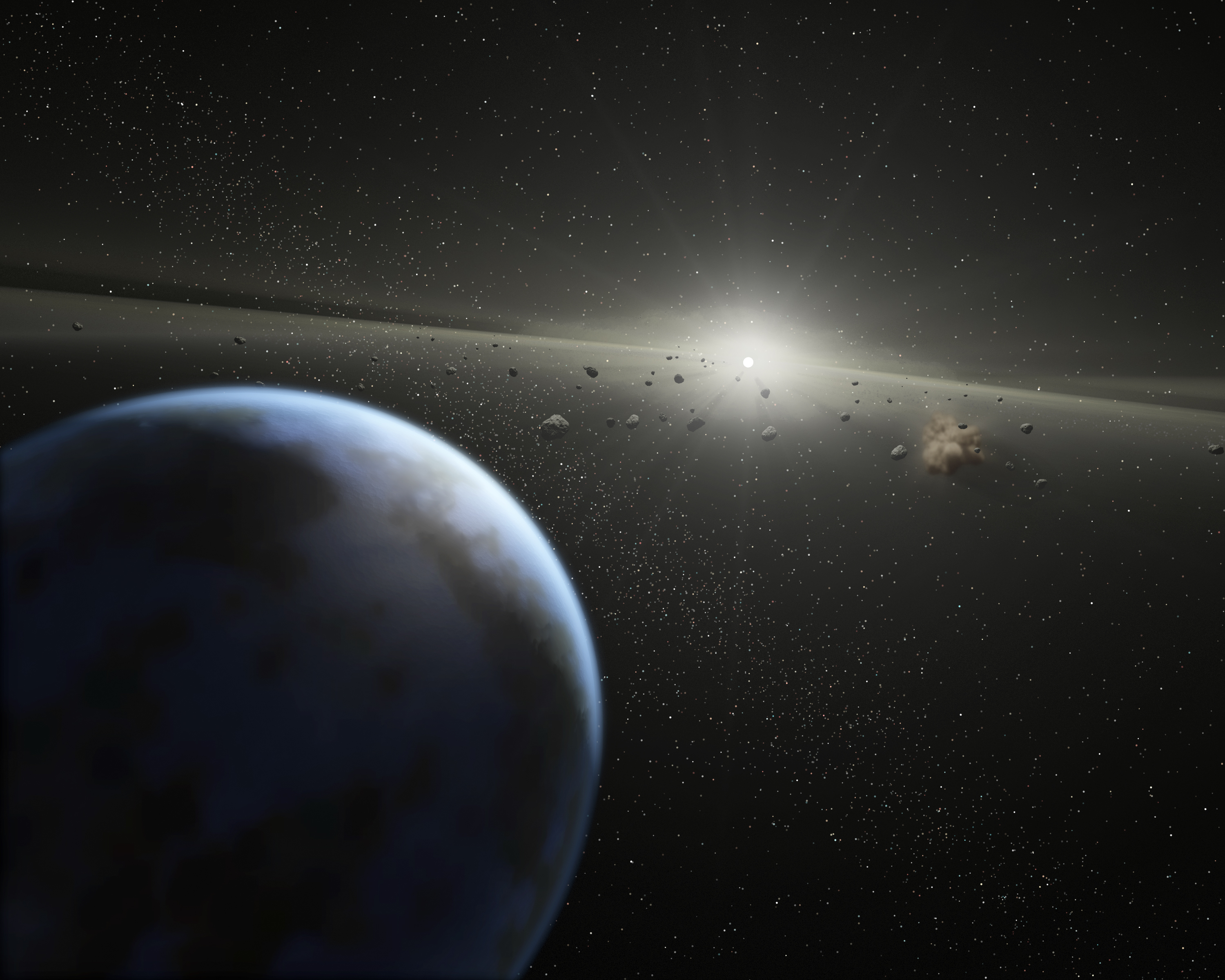- HD 69830 d
Planetbox begin
name=HD 69830 dPlanetbox image

caption=Artist's concept of HD 69830 d as a terrestrial planetPlanetbox star
star=HD 69830
constell=Puppis
RA= RA|08|18|23.9473
DEC= DEC|−12|37|55.824
dist_ly=41
dist_pc=12.6
class=K0VPlanetbox orbit
semimajor=0.63
eccentricity=0.07 ± 0.07
period=197 ± 3
ang_dist=50
long_peri=224 ± 61
t_peri=24513358 ± 34
semi-amp=2.20 ± 0.19Planetbox character
mass=>0.058
temperature=~284Planetbox discovery
discoverers= Lovis et al.
discovery_date= May 18, 2006
discovery_method=HARPS
discovery_status =confirmedHD 69830 d is an
extrasolar planet orbit ing theorange dwarf star HD 69830 every 197day s. It is the outermost known planet in itsplanetary system and possibly lies within its habitable zone.Discovery
Planet HD 69830 d was discovered in 2006.
Orbit and mass
The planet's orbit has a low eccentricity, similar to the planets in our
solar system . Thesemimajor axis of the orbit is only 0.63 AU, similar to that of Mercury in our solar system. However HD 69830 is a less massive and energetic star than theSun 's, thereby putting the planet within itshabitable zone .Characteristics
Given the planet's Neptune-type mass, it is likely that HD 69830 d is a
gas giant with nosolid surface. Since the planet has only been detected indirectly through its gravitational effects on the star, properties such as itsradius , composition andtemperature are unknown. Assuming a composition similar toNeptune orUranus and an environment close tochemical equilibrium , it is predicted that the atmosphere of HD 69830 d is mainlyhydrogen andhelium along with rich factors ofmethane , though cooler regions of the planet may be able to formwater clouds.HD 69830 d lies within the habitable zone of its parental star, HD 69830 as defined by the ability of an
Earth -mass planet to retainliquid water at its surface. While the prospects forlife on a gas giant are unknown, large moons may be able to support a habitable environment. Models of tidal interactions between a hypothetical moon, the planet and the star suggest that large moons should be able to survive in orbit around HD 69830 d for the lifetime of the system.References In Popular Culture
In the Bestiarum included with the special editions of
Halo 3 , HD 69830 is described as the home star of the Jackals, specifically stating they come from a hypothetical moon of the third planet at the inner edge of the asteroid belt.ee also
*
HD 69830 b
*HD 69830 c
*Appearance of extrasolar planets References
*cite journal | url=http://www.nature.com/nature/journal/v441/n7091/abs/nature04828.html | author=Lovis et al.| title=An extrasolar planetary system with three Neptune-mass planets | journal=Nature | volume=441 |year=2006 | pages=305–309| doi=10.1038/nature04828
External links
* [http://www.spitzer.caltech.edu/Media/releases/ssc2005-10/release.shtml SST: Signs of Alien Asteroid Belt]
* [http://www.solstation.com/stars2/hd69830.htm SolStation: HD 69830 / HR 3259]
* [http://www.space.com/scienceastronomy/060517_netpune_planets.html SPACE.com: Planets Found in Potentially Habitable Setup (May 17,2006)]
* [http://www.spacedaily.com/reports/Trio_Of_Neptunes_And_Their_Belt.html SpaceDaily: Trio Of Neptunes And Their Belt (May 18,2006)]
* [http://exoplanet.eu/star.php?st=HD+69830 Notes for Planet HD 69830]
Wikimedia Foundation. 2010.
